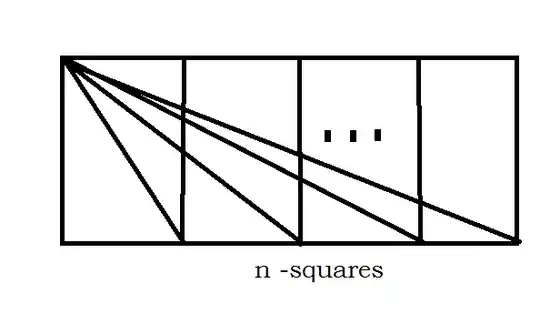We know about the famous 3-square problem.
Draw three adjacent squares with same size and any two adjacent square has a common side. This looks like a rectangle. Name all of the vertices of square in anti clock wise from $A$ to $H$. Join $HB$, $HC$, and $HD$. Prove that $$\angle{ABH}+\angle{ACH}+\angle{ADH}=90^\circ$$
Visual proof of 3-square problem. In this figure we can find three congruence right-angled triangles which are in yellowish-green color and their hands are in ratio $2:1$ and we can see two isosceles right angled triangle. Orange colored angle symbol denote half right angle (i.e,$45^\circ$).
In square $ABGH$, $HB$ is the diagonal of square. By using the property of diagonal of square we get, $\angle{ABH}=45^\circ$. We also know that $\angle{ABH}+\angle{ACH}+\angle{ADH}=90^\circ$.
From above two equations, we get $\angle{ACH}+\angle{ADH}=45^\circ$. $\square$
Now, for my question:
Let $n$ be the number of squares. Is it possible, for $n$-squares, for the sum of all angles which lies below each line to became $180^\circ$?


